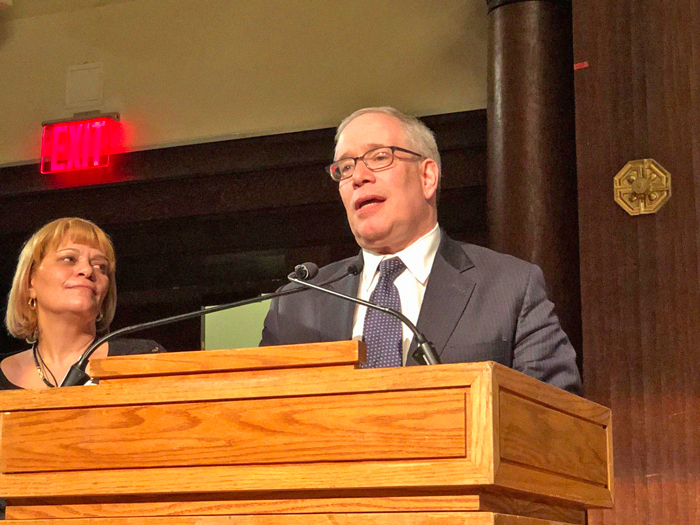File Photo
“The COVID-19 outbreak has laid bare the deep, systemic inequities that run through our city and has exposed how the right to basic health and safety are too often out of reach for New Yorkers due to class and skin color,” Comptroller Stringer said.
By Forum Staff
City Comptroller Scott Stringer recently released an analysis of the inequities in housing, health, food security, environmental quality, and access to technology that disproportionately impact the city’s most vulnerable communities amid the COVID-19 pandemic and quarantine, especially people of color, immigrants, seniors, and low-income New Yorkers.
The report, Stringer said, spotlights the adverse conditions prevalent among these communities—and why they must be addressed as part of any strategic approach to mitigate impacts of the virus and assist those who are isolated, overwhelmed, and in dire need.
The comptroller’s analysis examines overcrowded and dilapidated housing, which is particularly prevalent in neighborhoods with high immigrant populations, including western borough communities Jackson Heights, Elmhurst, and Corona; single-parent and immigrant households living below the poverty line; elderly and disabled New Yorkers living alone; neighborhoods with poor air quality and high asthma rates; and other New Yorkers who are facing severe isolation, deprivation, and risk of exposure to COVID-19.
The analysis takes a data-driven approach to examining and mapping some of these populations by community district in the hopes that they may serve to guide the City’s ongoing efforts to help New Yorkers in need, contain the virus, and to arm communities with information that could help to stem the tide.
To protect the city’s most vulnerable communities during the COVID-19 pandemic and beyond, Stringer has called on the City to conduct a multi-faceted strategic approach to protecting these vulnerable New Yorkers, including using vacant hotels and dormitories to house the homeless and alleviate overcrowding; providing PPE to all cleaning and maintenance workers and home health aides; creating a bank of cleaning supplies to all New Yorkers living in unsanitary conditions; drafting a comprehensive educational recovery plan that provides targeted resources to students who have fallen behind; expanding access to regional enrichment centers for children in shelters, temporary housing, and single-parent households; and expanding space on sidewalks and parks and pedestrianizing streets, among other recommendations.
“The COVID-19 outbreak has laid bare the deep, systemic inequities that run through our city and has exposed how the right to basic health and safety are too often out of reach for New Yorkers due to class and skin color,” Stringer said. “As we grapple with this unprecedented loss of life and livelihood, we must acknowledge that communities of color have long sounded the alarm about the persistent inequities that have plagued New York City. And the data is clear: communities of color, particularly Black and Latinx New Yorkers, immigrants, seniors, and low-income individuals and families are the targets most vulnerable to this virus. Our City’s efforts to combat COVID-19 must center on these communities, recognize the disparities, and take them on—from alleviating overcrowded housing, to improving poor air quality, to expanding internet access, to eliminating discriminatory loopholes in our social safety net. We are defined as a society by how we treat our most vulnerable. We have the tools, we have the data, we have the solutions, and right now—not later—is the time to act.”

